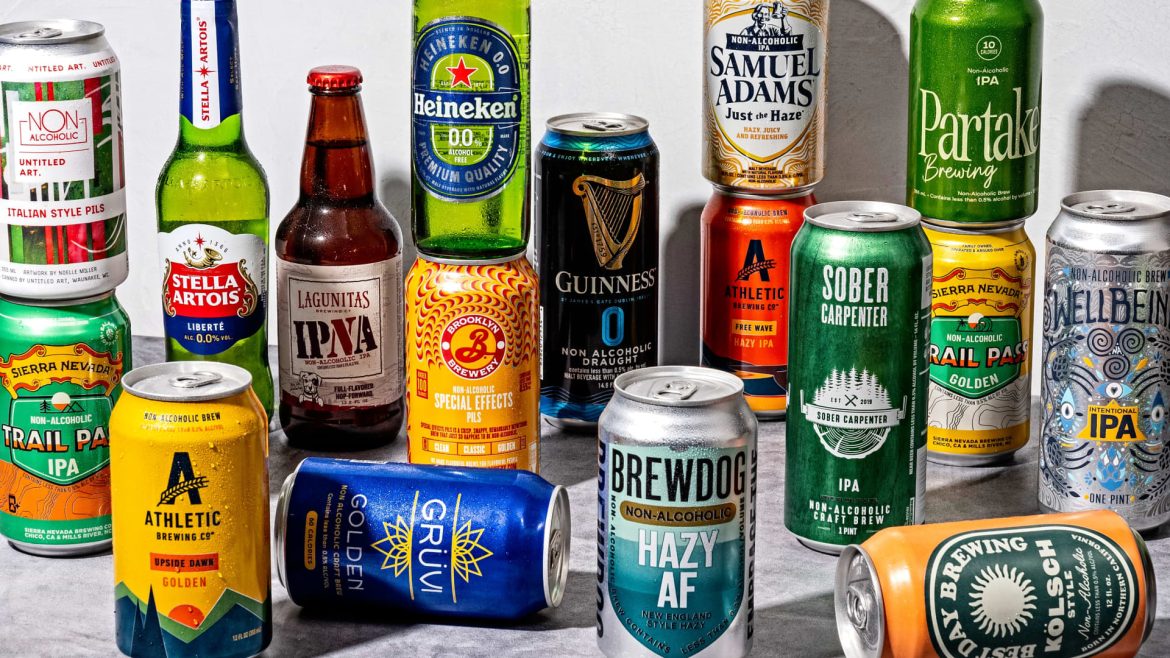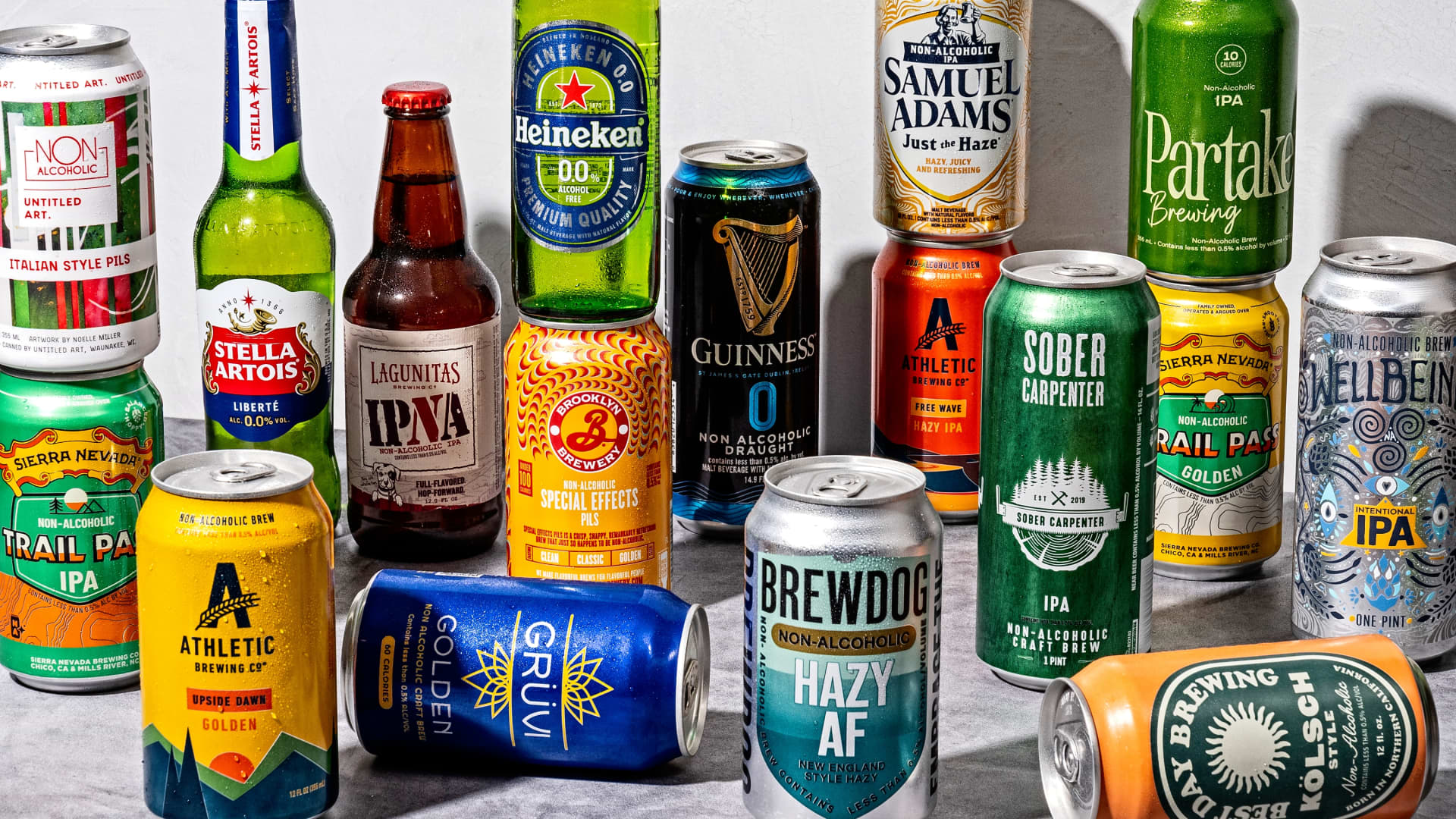The global non-alcoholic (NA) beer market is undergoing a remarkable transformation, positioning itself as a formidable force in the beverage industry. Analysis of recent data and industry reports reveals a sustained and accelerating growth trajectory, with non-alcoholic beer projected to surpass ale as the world’s second-largest beer category by volume in 2024. This sweeping shift reflects evolving consumer preferences, innovative product development, and broader lifestyle trends centered on health and wellness.
The Ascending Trajectory of Non-Alcoholic Beer
Non-alcoholic beer volume has seen explosive growth in recent years, with several sources indicating double-digit increases. For example, between 2018 and 2023, the global market for 0% alcohol beer grew by more than 40% in volume terms, reaching approximately 2.39 billion liters worldwide. Moreover, recent forecasts expect non-alcoholic beer production and consumption volumes to continue rising steadily through 2026 and beyond, with compound annual growth rates (CAGR) ranging from approximately 5.5% to 7.2%. This growth is not merely a fluke but the result of multifaceted factors harmonizing to shift consumer behavior and market dynamics.
Factors Fueling Growth
Health and Wellness Paradigm Shift
One of the most significant drivers behind the surge in non-alcoholic beer consumption is the growing public consciousness around alcohol’s health impact. Many consumers are seeking ways to moderate their intake without sacrificing social rituals or the taste of beer. Non-alcoholic options provide a compromise that aligns with fitness and wellness trends, allowing drinkers to enjoy the flavor and social experience minus the hangover or adverse health effects.
Improved Product Quality and Innovation
The non-alcoholic beer segment has evolved far beyond the early days of bland or overly sweet alternatives. Breweries—both large-scale and craft—have invested significantly in refining production techniques to improve flavor profiles, mouthfeel, and variety. High-quality offerings such as Firestone Walker 805 NA Blonde Ale, Bero by Tom Holland, and Budweiser Zero exemplify how iconic beer brands and innovators are engaging the market with compelling products that deliver authentic beer experiences without alcohol.
Market Penetration by Major Brands and New Entrants
The entry of mainstream beer giants into the NA space has accelerated market growth. Budweiser’s zero-alcohol iteration, for instance, leverages the brand’s heritage and consumer trust, helping normalize non-alcoholic beer consumption. Similarly, collaborations between well-known breweries and progressive new brands are diversifying product portfolios, appealing to a wider demographic that includes those who traditionally avoided non-alcoholic options due to flavor concerns.
Market Dynamics and Regional Insights
Global Volume and Revenue Growth
The non-alcoholic beer category is projected to approach or exceed $40 billion USD in market valuation by 2033. Current figures estimate the market size at over $20 billion, with solid growth momentum. Volume per capita consumption is expected to increase, with projections like 0.71 liters per person in certain markets by 2026. These numbers underscore the fact that non-alcoholic beer is no longer a niche product but a mainstream beverage category.
Leading Markets and Regions
The United States emerges as the leading market globally, generating revenues exceeding $4 billion from non-alcoholic beer sales in 2024. China and India rank as the second and third largest markets, though they lag significantly behind the US in revenue terms. This highlights both the established popularity of non-alcoholic beer in western markets and the growth potential in emerging economies where changing social norms and disposable income levels may spur increased adoption.
Socio-Cultural and Industry Implications
Changing Alcohol Consumption Patterns
The rise of non-alcoholic beer correlates with a broader shift in alcohol consumption patterns worldwide. In many regions, spirits and ready-to-drink cocktails are becoming more popular, while conventional beer’s share of the alcoholic beverage market shows signs of erosion. However, non-alcoholic beer enables the beer category to maintain and even expand its relevance by attracting moderate drinkers, abstainers, and health-conscious consumers alike.
Impact on On-Premise and Retail Sales
Retail and on-premise sales of non-alcoholic beer are both thriving. During initiatives such as “Dry January,” sales uplift significantly as consumers opt for healthier alternatives. The NA beer segment’s success in bars, restaurants, and social venues reflects its acceptance as a legitimate part of social drinking culture, breaking down past stigmas around non-alcoholic options.
Market Segmentation and Price Trends
Within the non-alcoholic beer market, the segment below premium quality holds a notable share, around 24.4%. Although premium offerings gain attention for quality and innovation, accessible-priced products ensure wide accessibility, supporting volume growth across diverse consumer segments.
Future Outlook and Challenges
The non-alcoholic beer trend is poised to continue ascending throughout the mid- and long-term future, driven by sustained innovation, health-conscious consumer behavior, and strategic marketing. Industry experts anticipate that by 2024 and beyond, the boundaries of the NA beer market will further expand with new product launches, collaborations, and category refinements.
Yet, challenges remain. Market success depends on balancing authentic beer taste with perceived health benefits, navigating regulatory frameworks in different countries, and combating lingering social biases. Furthermore, broader competitive pressures from spirits and other alcohol alternatives demand continual evolution of the non-alcoholic beer category to remain vibrant.
Conclusion: A Brewing Revolution in the Beverage World
The rise of non-alcoholic beer stands as one of the most compelling stories in the global beverage landscape today. What started as a niche, often underwhelming segment has transformed into a dynamic and fast-growing category challenging traditional beer consumption norms. By combining health-conscious consumer trends, improved quality, and strategic brand involvement, non-alcoholic beer is delivering a compelling proposition—offering the enjoyment of beer without the alcohol-related drawbacks.
As this trend continues, the beverage industry will need to adapt to a future where “beer” means more than just alcohol content. The increasing prominence of non-alcoholic beer redefines social drinking rituals and broadens the inclusivity of beer culture, ensuring beer’s continued relevance for diverse and evolving consumer needs worldwide.





